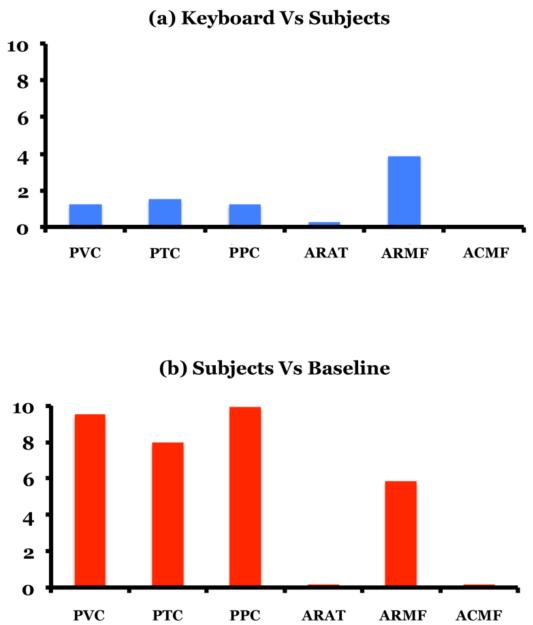Figure 10.
(a) The ratios of weighted average performance metrics for keyboard control as compared to brain-computer interface control. Note that a smaller ARAT implies faster ring acquisition and superior performance. Since keyboard control resulted in no crashes, the ACMF value was found to be zero in the ratio of keyboard to subject crashes per max flight. (b) The ratios of weighted average subject performance metrics to baseline BCI system performance using a random EEG signal that was generated by a naive subject receiving no training or task related feedback. Lower ARAT and ACMF metrics are favourable outcomes and so a low ratio for subject to baseline performance implies superior performance by the subjects when compared to the baseline random EEG.

